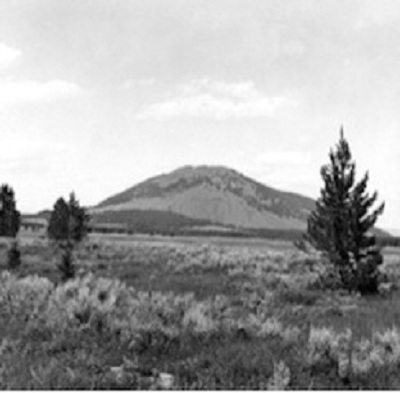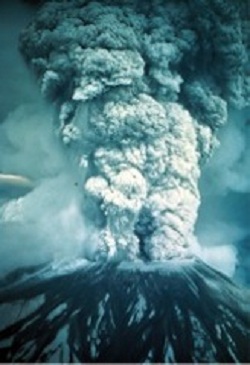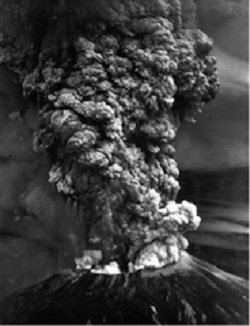
Yellowstone volcanic system remains active
The Yellowstone Supervolcano is supposed to erupt every 600,000 years. It has been 640,000 years since the last eruption.
The year in which the Mayans predicted the world would end, 2012, is right around the corner.
A supervolcano, or super volcanic eruption, is a volcanic eruption, which is an order of magnitude greater than any volcano in historic times (generally accepted to be greater than 200 cubic kilometers). This kind of eruption is typically sufficient to cause a long-lasting change to weather sufficient to threaten the extinction of species, and cover huge areas with lava and ash.
| Click on the video at right to view an audio slideshow about the Yellowstone caldera narrated and prepared by writer Jeffery Gibert. |
The Yellowstone Supervolcano is believed to lie on top of a hotspot, a volcanic area that forms as a tectonic plate moves over a point heated from deep within the Earth’s mantle, known as the Yellowstone Hotspot.
The Yellowstone Supervolcano has been the source of the last three eruptions from the Yellowstone Hotspot. The first eruption created the Island Park Caldera 2.1 million years ago, the second eruption created the Henry’s Fork Caldera 1.3 million years ago and the last eruption created the Yellowstone calderas.
“No actual volcanic eruption has occurred in the Yellowstone National Park region of Wyoming, Montana, and Idaho since a lava flow poured out about 70,000 years ago, said Steve Brantley, a U.S. Geological Survey scientist who researches the Yellowstone Volcano. “However, the area’s many geysers and hot springs indicate that the underlying volcanic system remains active.”
If the Yellowstone Supervolcano does erupt again, many scientists believe that lava filled with gas will shoot from the supervolcano into the air as high as 25 miles up and flow onto the ground, clogging bodies of water and covering landscapes.
 |
Bunsen Peak at Yellowstone National Park, a roughly circular body of intrusive igneous rock, is the eroded remnant of either the “neck” of an Absaroka volcano or a small stock that solidified directly beneath a volcano (Photo courtesy of the U.S. Geological Survey). |
It’s like “opening the Coke bottle after you’ve shaken it,” said Bob Christiansen, a U.S. Geological Survey scientist who pioneered research on the Yellowstone volcano in the 1960s.
This will cause ash and debris to rain down onto Earth over a course of hundreds of miles. The ash could stay in the air for anywhere between weeks and months as periodic after blasts occur, emitting pollutants.
As a result, every time that it rains, the rain will be categorized as acid rain because of all of the ash that it encounters on its way to the ground. The ash will also affect the climate because it will be so thick that the sun will be blocked out, causing temperatures to dip dramatically.
“The possible secondary hazards from a potential large caldera-forming eruption at Yellowstone could themselves be greater than the primary hazards from other types of eruption.,” said Robert Christiansen, a U.S. Geological Survey scientist who pioneered research on the Yellowstone volcano in 2007. “Suspended ash would continue to circulate in the upper atmosphere for many weeks, and could, together with volcanic gases associated with the eruption, affect global climate for several years.”
Over time, the land nearby the supervolcano will collapse and a new caldera will be formed.
Everyone within the hundreds of miles radius that is affected by the ash will have a hard time surviving because they will have to stay sheltered, preferably underground, so that they are not affected by the pollution.
|
At right, an aerial view of Mount St. Helens on May 18, 1980. The eruption sent volcanic ash, steam, water and debris to a height of 60,000 feet (Photos by Austin S. Post, U.S. Geological Survey). Next below, the upper third of Mount St. Helens on May 18, 1980, with the mountain in eruption. |
 |
The longer that the after blasts continue to happen, the less chance of survival that these people have because eventually their food and drink supply will run out and they will not be able to restock because coming in contact with the ash filled air and breathing in the toxins will ultimately lead to their death.
To put in perspective just how deadly the Yellowstone supereruption would be, the Mount St. Helens eruption on May 18, 1980, at 8:32 a.m. PDT shocked the world, killing 57 people and destroying 250 homes, 47 bridges, 15 miles of railway and 185 miles of highway. That is nothing compared to the damage that the Yellowstone Caldera could produce.
Christiansen, Jacob Lowenstern, Robert Smith, Henry Heasler, Lisa Morgan, Manuel Nathenson, Larry Mastin, L. J. Patrick Muffler, and Joel E. Robinson are among scientists that predict that the Yellowstone supereruption could possibly be as catastrophic as the eruption at Lake Toba, the largest volcanic lake in the world, in Indonesia.
The eruption at Lake Toba, which occurred 69,000 to 77,000 years ago, had a big effect on global climate. It is believed that the global temperature dropped between three to five degrees Celsius (five to nine degrees Fahrenheit). The supereruption registered an 8 on the Volcanic Explosivity Index, the largest explosive volcanic eruption recorded in the last 25 million years.
It is also believed that the human population dropped to around only tens of thousands as a result of the supereruption, but that statistic is heavily disputed because no evidence has been found of any other animal decline or extinction.
 In the movie, 2012, an interpretation of what the Yellowstone Supervolcano eruption could look like is offered. There are huge lava bombs dropping from the big ash cloud created by the supereruption that covers the sky. The bombs are descending at a rapid rate and would surely kill anybody near them.
In the movie, 2012, an interpretation of what the Yellowstone Supervolcano eruption could look like is offered. There are huge lava bombs dropping from the big ash cloud created by the supereruption that covers the sky. The bombs are descending at a rapid rate and would surely kill anybody near them.
“Any caldera-forming eruption probably would begin at one or a few individual sites with plinian columns of hot volcanic ash rising into the stratosphere, and likely would spread to encompass a ring-fracture system encircling the newly collapsing caldera,” said Christiansen.
“Once the eruption developed past the initial phase, areas within and adjacent to the eruptive source would be overrun quickly by lateral flows of mixed volcanic ash, rocks, and gases at temperatures of several hundred degrees Celsius and speeds of a hundred km/h and greater as ash fall continued both within the source area and to great distances, even around the globe. All structures and living things within the areas overrun by ash flows would be destroyed and possibly vaporized.”
The Yellowstone supereruption is somewhat predictable. Many earthquakes (although, just about all of them imperceptible) are recorded around the Yellowstone Hotspot, which causes doming of the land and pressure to build under the land. The higher the magnitude of the earthquakes and the shorter the period of time in between the earthquakes around the hotspot, the more likely a supereruption is bound to happen.
“I think that the system has more or less equilibrated itself,” said the retired Christiansen, “but that’s an interpretation that would not hold up in court.”

Comments are Closed